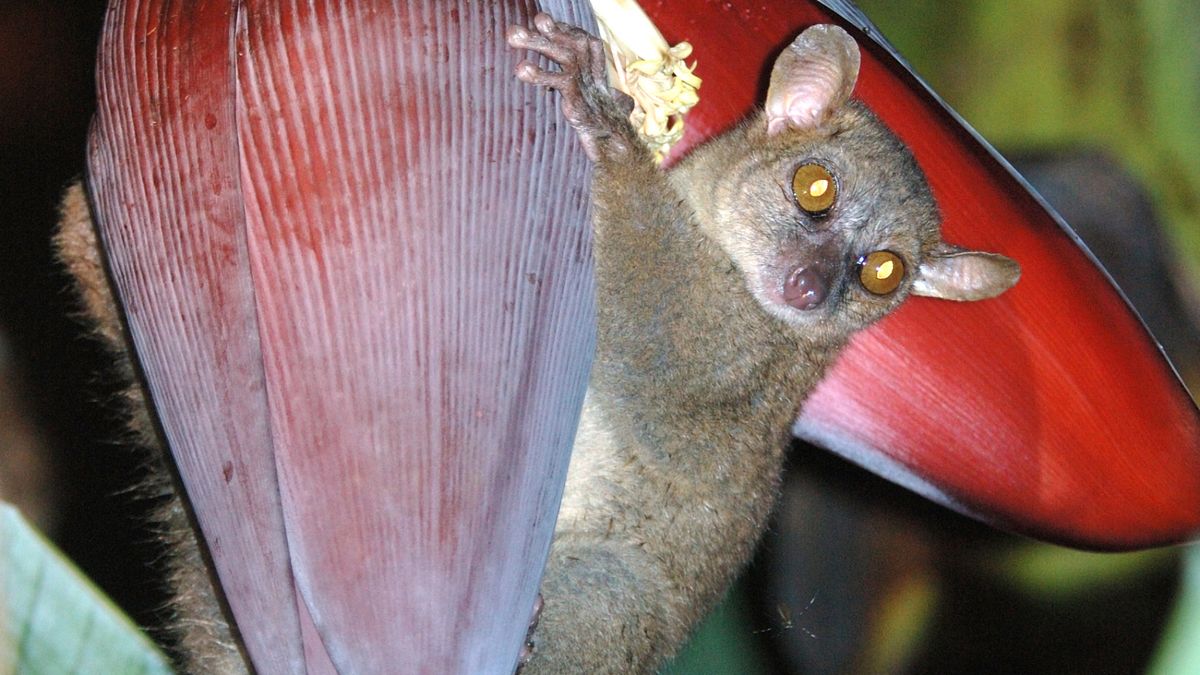Name: Northern giant mouse lemur (Mirza zaza)
Where it lives: Northern Madagascar
What it eats: Fruits, flowers, nectar, tree sap and small insects
Why it’s awesome: Northern giant mouse lemurs may be tiny, but they have a striking trait: remarkably large testicles. The primates only weigh around 10 ounces (300 grams), but they have the largest testes-to-body ratio of all primates — with their testicles making up around 5% of their body weight.
These nocturnal lemurs, which are native to the forests of the Ampasindava peninsula in northwestern Madagascar, are around 10 inches (25 centimeters) long, excluding their tails.
Only discovered in 2005, they have large, round, reflective eyes that enable them to see in low light. Their long, fluffy tails help them balance as they jump through the trees, and their large, thin ears help them listen out for predators.
But it’s their unusually large testicles that make them stand out from the crowd.
If humans had a similar ratio, their testicles would be the size of grapefruits, according to New Scientist. These animals’ testicles are so large that often, lemurs will bump and bruise their testicles as they jump and swing between tree branches – which is an unfortunate consequence of their physical traits.
The reason these lemurs have such large testicles is because they have a polygynandrous mating system, meaning both males and females have multiple partners. As the males face intense competition to fertilize females, they evolved larger testes to produce more sperm. Higher amounts of sperm means they can produce larger ejaculations and mate more frequently.
Unlike many other lemur species, northern giant mouse lemurs don’t have specific mating seasons, so they reproduce all year round. Researchers think this is because nutrient-rich foods are constantly available. As a result, their testicles stay huge throughout the year.
When females are ready to mate, they let out calls to attract males. They give birth to one offspring after about three months, but because they mate year-round, they can have two or three infants in a year. Females are the sole care providers for the young, and the offspring reach maturity at around 1 year old.
Northern giant mouse lemurs build nests high in the trees to protect themselves from predators and harsh environmental conditions, such as monsoons. They form communal sleeping nests that can house up to eight lemurs, including multiple males and lemurs of different ages, which is an uncommon social behavior. It’s not known exactly why they do this, but it may be to help them keep warm during the colder months and therefore conserve their energy.
